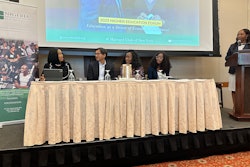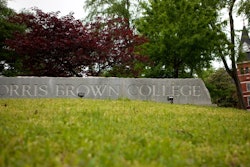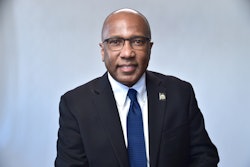Top 100 Undergraduate Degree Producers
Interpreting the Data
By Victor M. H. Borden, Pamela C. Brown and Olivia Majesky-Pullmann
Who were Alexander Lucius Twilight and Mary Jane Patterson? If you know, you are an excellent candidate for the “Jeopardy” category, “African-American firsts.” Knowing the topic of this edition of Diverse, you can probably guess the answer: “They were the first African-American male and female to be awarded bachelor’s degrees by a U.S. college or university.” Can you guess the years and colleges? For Twilight, it was in 1823, from Middlebury College. Patterson graduated in 1862 from Oberlin College. But despite the 39-year head start, males now represent a minority of bachelor’s degree recipients among African-Americans as well as within other racial/ethnic groups. In this year’s Top 100 undergraduate analysis, we explore trends in gender differences among racial/ethnic groups, as well as several other trends in bachelor’s degree conferrals.
Our trend analysis provides a broad context for processing the detailed Top 100 lists featured in this issue. Many people have a love-hate relationship with rankings. We love them when they place a favorable light on our own institution or our alma mater. But we question, ignore or reject them when they don’t. Despite, or perhaps because of, these emotional reactions, we feel compelled to read them. Diverse’s Top 100 listings are less controversial than many other rankings because they are very simple. We do not purport to be measuring institutional quality or value. We simply recognize those institutions that have conferred the largest number of degrees to minority students. Moreover, we do so across a wide range of disciplinary categories, allowing us to highlight the role of diverse institutions from across the U.S. higher education landscape.
Because our focus is on quantity (we leave it to market forces, government agencies and accreditation bodies to assure quality), we recognize that our listings tend to favor larger institutions. This year, available online only, we introduce into our analysis several views that accommodate smaller institutions. But first, we’ll describe the data source and methods used to assemble the Top 100 lists.
Source of Data & Methodology
This year’s report includes degrees conferred during the 2005-2006 academic year that have so far been reported to the U.S. Department of Education’s National Center for Education Statistics (NCES) through the Completions Survey of the Integrated Postsecondary Education Data Set (IPEDS). The preliminary data are complete and accurate for those institutions included in the analysis, which, in our experience, represents the vast majority of the country’s two- and four-year institutions. We welcome back this year the institutions in the Mississippi and Louisiana Gulf Coast region that were granted a reprieve from reporting last year due to the clean-up and rebuilding effort after Hurricanes Katrina and Rita. As one small reminder of the disaster, many of those institutions do not have prior year data and, and so are missing the indicator of percent change from the prior year.




















